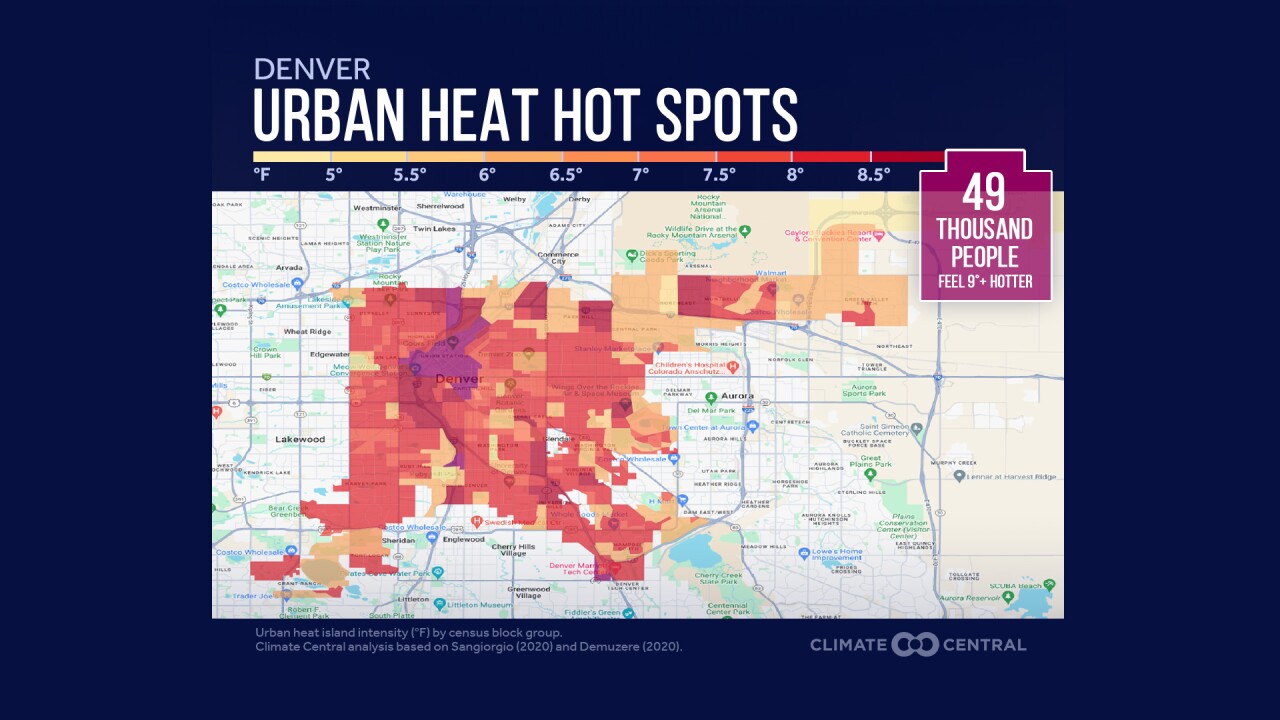DENVER — Though the heatwave will hit the entire Front Range this week, it will feel noticeably hotter in urban areas.
Living in a city can have a lot of benefits, but there are also downsides, especially during heatwaves.
“It's like a dome of heat,” said Elisabeth Cohen with Denver’s Office of Climate Action, Sustainability and Resiliency. “The city itself is hotter than surrounding areas because it's absorbing all the heat.”
Cohen said that's because Denver has a lot of big buildings and asphalt surfaces, like parking lots and streets, that absorb heat.
"It also makes the city hotter for longer. So at night, the buildings are really hot and the cement is really hot, and instead of cooling off really quickly, that heat continues,” said Cohen.
It’s a phenomenon scientists refer to as a “heat island.”

According to scientists at the nonprofit Climate Central, downtown Denver typically feels about 9 degrees hotter due to its dense environment. But other parts of the city are also considerably hotter than they’d normally be due to little tree cover.
"One thing that we can do is to cool off the city by doing things like planting trees,” said Cohen. “Trees are like magical air conditioners."
Working with nonprofits, the city has planted more than 1,400 trees over the last couple of years. Officials are focusing on historically underdeveloped areas, which fall along the "inverted L" — or where Interstates 70 and 25 fall — and include many of the city’s Black and Hispanic residents.
American Forests put together the Tree Equity Score, which allows people to compare parts of their communities with low and high tree cover.

National
Program aims to help cities map out urban heat islands
"Really the areas that we're focusing on are in North Denver and in West Denver,” said Cohen. “Those areas have a lot less tree cover.”
The city hopes to have 2,100 trees planted by 2025.
Here's how one city is working against extreme heat
Virtually every city in America is a heat island. Here's how one is finding its voice.




